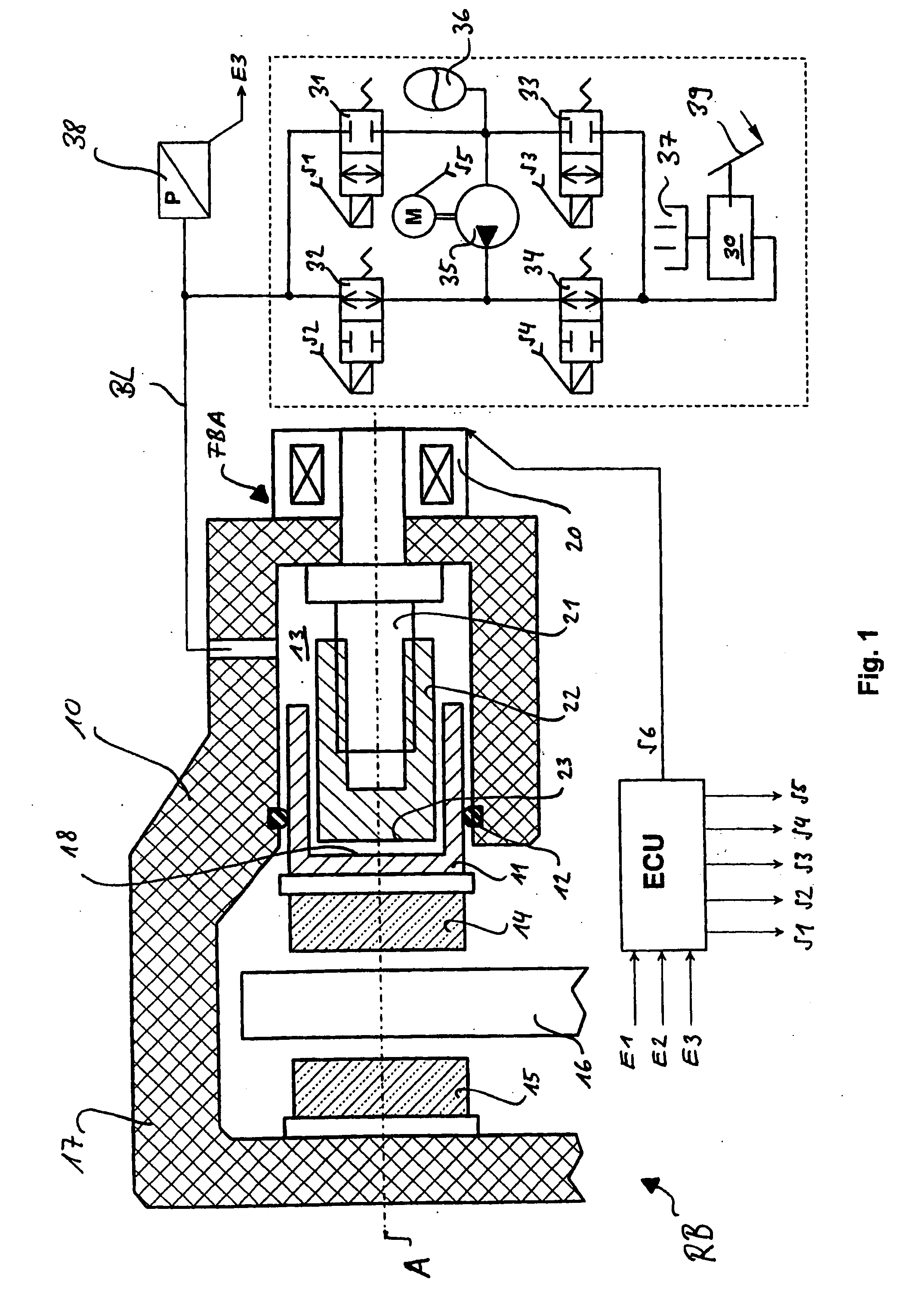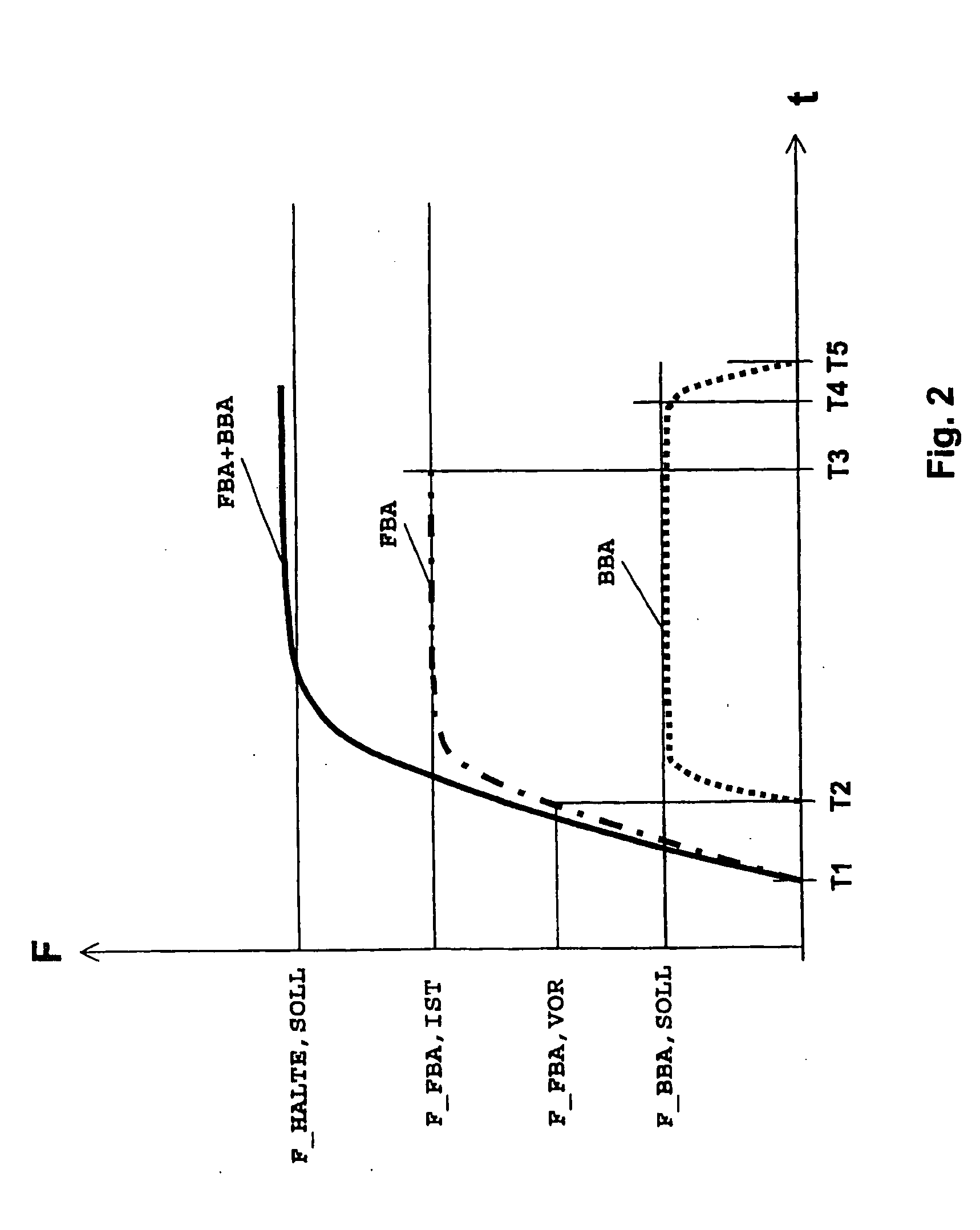[0009] The
advantage of the invention is that the brake forces to be generated by the parking brake system can be limited. Limited, for example, to the extent that it is only necessary to cover a simple load situation in which a vehicle with a small load is to be held stationary on a substantially level road. It is thus possible to use an
electric motor with relatively low power and a gear unit with a relatively low reduction /
transmission ratio for the electromechanical actuating unit, which is not only advantageous in terms of cost but also means that the overall size of the electromechanical actuating unit is reduced to more compact dimensions.
[0010] The invention furthermore advantageously makes use of the above-mentioned feature that the gear unit of the electromechanical actuating unit of the parking brake system is of a self-locking construction. As a result, the parking brake system can maintain higher brake forces than it, or its electromechanical actuating unit, is able to generate. Therefore, although the brake forces which can be generated by the parking brake system are limited, it is still suitable for load situations in which a vehicle with a full load, for example, has to be safely held stationary on a road with a gradient of 30% and steeper.
[0011] The additionally required brake forces are provided by the service brake system, which is present in any case, with the invention likewise advantageously making use of its above-mentioned feature of being able to generate brake forces automatically, i.e. independently of driver actuation.
[0012] Since the service and parking brake systems are electrically controllable, one or more electronic control units are present which detect operating conditions, for example the loaded condition of the vehicle and / or the gradient of the road and / or the temperature of the wheel brakes, by way of corresponding sensor means or mathematical models. There is therefore also the
advantage that the additional brake forces to be provided by the service brake system can be variably and individually adjusted according to particular operating conditions or load situations. This has a very favourable effect on the total collective load to be applied by the brake arrangement and, in individual cases, e.g. when the vehicle is to be held stationary on a level road, can even mean that no additional brake forces have to be provided by the service brake system.
[0013] It is preferably provided for the service brake system to withdraw the additionally required brake forces after the parking brake system has reached the brake forces which it is able to generate. On the one hand, with the withdrawal of the additionally required brake forces, an increase in the self-locking effect of the parking brake system or its electromotive actuating unit is achieved, which is particularly conducive to safety when the vehicle is to be held stationary for example on a road with a steep gradient. On the other hand, the service brake system is then force-free during the stationary or parking phase of the vehicle, which is a legal stipulation for a hydraulic service brake system owing to the risk of leakages.
[0014] Even if the parking brake system can maintain higher brake forces than it is able to generate owing to its self-locking effect, the forces which it, or its electromechanical actuating unit, is able to generate are generally sufficient to overcome the self-locking forces to release the parking brake system. In particular cases, when it is moreover necessary to overcome reaction forces, for example because the vehicle has been parked on a road with a very steep gradient, it is therefore possible to provide for the service brake system to generate predetermined brake forces before the parking brake system withdraws the brake forces maintained by it. Provision can also be made here for the predetermined brake forces to be generated by the service brake system to be variably and individually adjustable according to particular operating conditions, e.g. the loaded condition of the vehicle and / or the gradient of the road.
 Login to View More
Login to View More  Login to View More
Login to View More 


